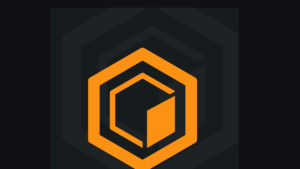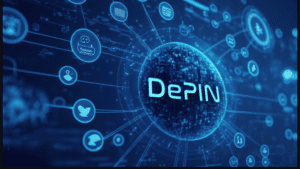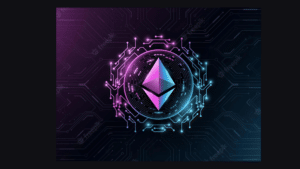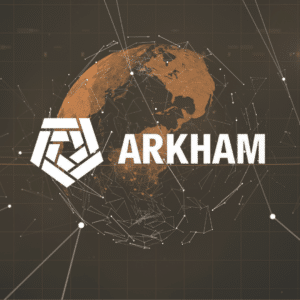In this post, we look back on an interview between Tom Sosnoff and 20-year-old Vitalik Buterin that took place in February 2014.
Written by: Mike Martin | Updated August 1, 2023
Video by: Ryan Grace
Fact checked by: Laurence Willows
Sosnoff – Buterin Interview Transcript
Tom Sosnoff: Thank you for coming on tastytrade today Vitalik. We’re looking forward to having a short discussion with you about virtual currencies. There’s been an explosion of information with respect to virtual currency. You’re 19 years old, right?
Vitalik Buterin: Well, actually 20. As of a week though. Oh, two weeks ago.
Tony Batista: Happy birthday. Close enough, right? Happy Birthday.
Tom: I’ve read a lot about your background. Talk to us about the project that you’re working on so people can get some history on you.
Vitalik Well, the project that I’m working on right now, it’s called Ethereum. The idea with Ethereum is, there’s been a lot of interest in these sort of, uh, Bitcoin 2.0 tech technologies in the past year or so. So for about five years now, we’ve had Bitcoin and we’ve had these sort of new virtual currencies, but now people are already looking into what else can we do with Bitcoin. Can we use Bitcoin for more than just money? So there’s been a lot of different projects in that area. There’s been something called covered coins. There’s something called Mastercoin, Counterparty, and dozens of others. Ethereum is sort of in the same theme as those projects. So it tries to use Bitcoin’s same cryptographic infrastructure kind of financial contracts, peer-to-peer networking protocols, and so forth. What makes Ethereum unique is that it has its own built-in programming language so you can build pretty much whatever you want inside of it. Sort of like the same thing that JavaScript does for your love browser. So for example, we use JavaScripts to build Gmail to build Facebook and so forth. You can use Ethereum’s programming language to build pretty much any kind of financial contract, peer-to-peer protocol, and autonomous agent that you can think of.
Tom: Let’s take a step back for just a second. Ethereum is, you are the kind of creator of that, aren’t you?
Vitalik: Yes.
Tom: I think there are about 50 different virtual currencies. I think about 50. Right? Is that fair?
Vitalik: Over a hundred.
Tom: Over a hundred now. Okay. So I don’t even know. Tony and I just bought our first Bitcoin about three weeks ago. Maybe a month ago. We bought our first Bitcoin. For us, it was important to have a very different understanding of the space. You co-founded Bitcoin Magazine.
Vitalik: Yes.
Tom: When did you start, how old were you when you started just kind of dabbling in Bitcoin?
Vitalik: That was March 2011. I was 17 at the time. So at first, I started off basically just writing articles for a blog that’s called Bitcoin Weekly. I was paid five Bitcoins an article for that, which back then was about $4. And then, I Co-founded Bitcoin Magazine when I was 17.
“I was paid five Bitcoins an article for that, which back then was about $4”
— Vitalik Buterin
Tom: Was it the fascination with developing the concept, the algorithms? Or was it the fascination with just creating another kind of currency? I’m trying to figure out like how a 17-year-old, you know, kind of bites on this and then just decides, hey, you know what, I could do this. I could build my own.
Vitalik: Yeah, well it was, uh, somewhat both, both of those things. I was really attracted by the fact that Bitcoin is the sort of money that’s completely under your control. So back when I got my first five Bitcoins, I realized that it’s basically just this, there was this file on my computer and there was a computer network and there was really nothing else. There wasn’t any kind of website, institution, or bank between me and the system. It’s something that I could control directly. So I think a lot of people are attracted to having some kind of money that they can touch, that they can handle directly.
Tom: Well, that’s for sure. But it’s really even cooler when you can build your own currency and have your own money.
Vitalik: Exactly. With Bitcoin, I sort of feel the same way. Money that I can handle directly except with a command line.
Tom: Yeah, I mean, it’s just awesome. Walk Tony and me through some of the differentiating pieces of building your own virtual currency and then some of the things, um: why is your currency; why would I use your currency?
Vitalik: Okay. Yeah. So, I’ll just start off by talking in more detail about this idea of Bitcoin 2.0. So this is something that people have been really interested in. Slightly starting 2012, more so in 2013. So there was this idea, for example, called covered coins. So the idea with covered coins is that, hey, with Bitcoin you can have one currency on this decentralized network. Well with covered coins, let’s have thousands of currencies all inside of the same network. So you can issue your own currency. So for example, if you’re a bank, then you might wanna issue a covered coin currency that’s actually backed by US dollars. You can have a covered coin currency that’s backed by gold. You can have a covered coin currency that actually is shares in your company.
Tom: So believe me, we’ve thought about it here for tastycoins. But I’m still like, I still don’t understand how any of this is truly transactional or truly adaptable outside of it being just more of like a game. Like, like in other words, I can kind of, I can kind of see, um, transactional application, a functional transactional application for Bitcoin because it’s first to market. But I don’t see how a consumer can differentiate between, you know, a hundred different virtual currencies, and especially when none of them, I don’t really understand the fungibility or the clearing mechanism for, for a hundred different currencies.
Vitalik: Right. So the idea there is that we’re really not talking so much about Bitcoin as a currency. We’re really talking more about Bitcoin as a technology and a platform. And what we can do with it. So with covered coins, for example, if you have a covered coin that’s say backed by US dollars, that has a lot of benefits because first of all, Bitcoin is extremely easy to work with. You don’t need any kind of accounts set; setting up a Bitcoin involves only takes a few minutes. There are pretty much no barriers to entry, no transaction fees, you know, all the things that we like about Bitcoin, and yet its value is as stable as a US dollar. And that’s just one application of a covered coin. So we’re really talking about here is this idea of covered coins as a whole, right? That’s sort of one way of moving to the next level
Tom: That part of it, that part of it we get. That’s interesting. Yeah. But with Ethereum, you know, what are you thinking? Like where can you go with this?
Vitalik: Okay. Yeah. The thing here is that Ethereum is sort of like the culmination of a really long, long chain of ideas. So I do wanna like go through some of them, to give people an idea of why it was created, and what the need for it is. So after covered coins, the next idea was this master coin and master coin is this protocol where you can also, it’s also a protocol that’s sort of on top of Bitcoin. But you can have your own currencies, it’s just like color points, but you can also do financial contracts. You can do a decentralized exchange. It has all sorts of these advanced features. So now what Ethereum does is that Ethereum says, well, why not? Instead of having a protocol with lots of different features with 30 different things that you can do with it, let’s have a currency with a built-in programming language. And if you do that, then there’s basically an infinity of different things you can do with it. Because anything that you might want to do, you can just write it in, write it in code. So if I wanted to write some really complicated financial contract that has like five different clauses gives, gives $500 to X under these conditions, gifts 600 plus y dollars under those conditions, and so forth, I could just write it in. And then the contract would sort of enforce itself.
Tom: So, I’ve read a bunch of stuff about, you know, about interest in your project. Who’s approached you? I’m just curious, like, you know, who’s approached you and said, Hey, this is really cool. I want to commit capital to it. I want to, I want to help you build it. Or is this pretty much, are you still an outlier?
Vitalik: There has been a lot of interest. So I think there’s been a large amount of interest from people in the Bitcoin space. Some of these other Bitcoin 2.0 protocols, things like covered coins, things like match Bitcoin. There is a huge investor community behind them. There are a lot of people that think that you know, Bitcoin 2.0 is the future of Bitcoin. Much like Web 2.0 is the future of the internet. So they’re saying, so they think that Ethereum looks promising too. And they wanna put money into it.
Tom: So talk to me about you for a little bit. You just turned 20 years old. I read somewhere that you just dropped out University. Um, I’m not sure what school you were going to full-time. Is that correct?
Vitalik: Yeah, well, I dropped out of Waterloo back in April to work on Bitcoin full-time, and then Ethereum, I started working in November.
Tom: Okay, so what’s your game plan? Your personal game plan? What interests us is everybody watching this today is a do-it-yourself investor, self-directed, do-it-yourself, investor. And what’s interesting to people to see, hey, you know what, what makes this kid tick? He’s 19 years old. You’re taking a shot. Of course, you can recover. I don’t view this as having any risk to you other than, you know, just resource risk and you can always get that back. You’re plenty young enough. Can you actually monetize this or is this just a vision?
Vitalik: We’re building it. I mean, the nice thing about currencies is that you actually can monetize them. When you’re creating your own currency, you can basically say we’re going to conjure out a hundred thousand units of this currency and we’re gonna hand it out to people who helped develop it.
Tom: So if I wanted to, if I wanted to dig down into this, into this coin right now, into this currency, this coin, how would I do it?
Vitalik: Depends on what you want it to do.
Tom: Let’s just say I wanted to inventory it. I like this Vitalik kid. And do you go Vitalik or Vital?
Vitalik: Vitalik.
Tom: So I like this Vitalik and I find him really interesting and I wanna bet on him cuz we’re in the world of – it’s almost like crowdfunding social, you know, social sourcing right now. So I’d like to bet on him. I’d like to buy some of these. I’d like to buy something. What do I do?
Vitalik: Yeah. Well, we are going to have, at some points next month, we’re hoping we’re going to have an opportunity for people to essentially pre-order some of this Ether, uh, Ethereum’s internal currency.
Tom: So you’re going to call it ethers?
Vitalik: Yeah. Well, ether.
Tom: How do you spell that?
Vitalik: E t h e r. Like that void up in the sky. So we’d basically be selling them at a price of 1000 to 2000 ether for our Bitcoin.
“So you’re going to call it ethers?”
— Tom Sosnoff
Tony: So the currency is only gonna be exchangeable for Bitcoin.
Vitalik: At the start, likely. We do have plans for partnerships with some different exchanges as soon as Ethereum actually launches, we’re hoping to have the ability to exchange it directly for Dollars and Euros and Swiss Franks right out the door. But it’s, at this point, we’re thinking of Bitcoin as a sort of an easier starting point.
Tom: I love that.
Tony: I do too.
Tom: For the consumer that’s, um, that’s just interested in kind of what you guys are doing in the space, it’s very difficult to decide like, where do we spend our money? You know, because essentially we’re not betting on, we’re betting on his ability to build a business. We’re not necessarily at this point, you know, betting on a currency, um, in the sense we’re not using it as a transactional currency.
Tony: Correct.
Tom: What kind of safeguards are in place with the currency that you’re building that would maybe, um, lessen some of the concerns that a lot of people have about Bitcoin?
Vitalik: Well, a lot of us think a lot of the same concerns that exist with Bitcoin do also apply here. Like it’s a cryptocurrency, it’s volatile. There are issues with securing it and so forth. So I think the answer to that is, uh, two things. So, first of all, well, yes. There is a risk that we’re going to, we’re going to completely fail, and for some reason, Ethereum’s going to turn out to be impossible. I think that’s just a risk that you, uh, of course, that you always, that you always take when you’re participating in any kind of like pre-order fundraiser or whatever. But then once Ethereum gets released,..some of its advanced scripting features do actually help a lot in terms of solving some of Bitcoin’s problems. So, for example, a lot of people talk about the security issue. Like there are lots of stories about, oh, I got hacked and I lost $30,000 worth of Bitcoin. So our script system actually allows for a lot of interesting possibilities in, uh, improving that situation.
Tom: Vitalik, thank you so much for coming to the show today. And, um, we wish you the best of luck. I just hope Tony doesn’t, um, steal your idea and start his own currency.
Tony: I think they’ll follow yours more than they’ll follow mine.
Vitalik: Feel free.
Tom: He likes the competition. Of course, of course. Well, we’re definitely gonna be watching it, I saw the video last night, but what’s the launch date?
Vitalik: Uh, we don’t wanna commit to a launch date yet. Because like if you look at every other software company that’s committed, that’s committed to a launch date, as always, and pretty much ended up pushing it back, right?
Tom: So if somebody wants to learn more, where do they go?
Vitalik: ethereum.org.

Mike Martin
Mike Martin formerly served as the Head of Content for tastycrypto. Before joining tastycrypto, Michael worked in the active trader divisions of thinkorswim, TD Ameritrade, and Charles Schwab. He also served as a writer and editor for projectfinance.
Michael has been active in the crypto community since 2017. He holds certifications from Duke University in decentralized finance (DeFi) and blockchain technology.


The Core Blockchain and DeFi Ecosystem: What You Need to Know

7 Best DePIN Crypto Projects

What Is Symbiotic and How Does It Work in 2024?

Ethereum vs Ethereum ETFs – 5 Major Differences


